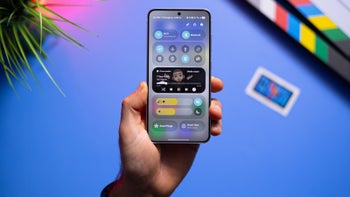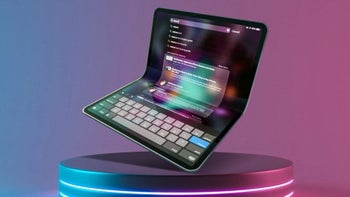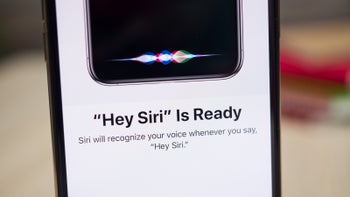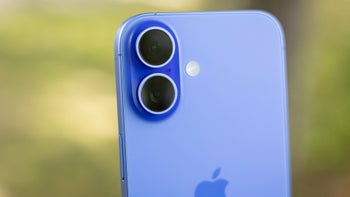Samsung Galaxy Note Edge vs Samsung Galaxy Note 3: first look
Design
With the Note Edge and Note 3, you've got two devices that are very alike in terms of their basic shape -- two rectangles with rounded corners. The differences, with the exception of the screen on the right edge of the former, however require a closer inspection. For one, the Note Edge is the first in the Note line (along with the new Note 4, that is) to sport metal in its build. Indeed, the frame is now made out of the sturdy material, instead of the plastic imitation present with the Note 3.
Looking at the back, we again have some subtle differences. For example, while both devices have a soft-touch, faux-leather backs, the Note Edge does away with the fake stitching that is present with the Note 3, and also adopts a slightly different (and nicer) pattern. Also different is the button placement on the Edge, and instead of housing both of these on the right side of the frame, Samsung has instead put the power button on top of the device, while the volume rocker has been moved to the left side. In terms of ergonomics, this is an unwelcome change, but the company obviously had to move them to make room for the side screen.
Display
The Samsung Galaxy Note Edge comes with a super-crisp, 5.6-inch Quad HD resolution (1440 x 2560) Super AMOLED display, good for the whopping 525 pixels per inch. In addition to that, Samsung has also set aside 160 pixels for the display on the edge, though we don't yet know its exact size (we guess about 1 inch). Thankfully, said tiny screen is not separate from the main one, so content seamlessly curves over to the side.
Looking at the Note 3, things are more tame. Last year's Note flagship makes use of a seemingly larger, 5.7-inch Super AMOLED display with a resolution of 1080 x 1920 pixels, or a ppi of 386. Obviously, if you count the side screen on the Edge, the two are pretty much on par in terms of screen real estate.
Interface and functionality
While both devices make use of Samsung's TouchWiz overlay based on Android 4.4 KitKat, the two differ visually. The reason for this is simple: Samsung simply didn't update the TouchWiz software of the Note 3 to the latest version available. Unfortunately for the Note 3, this means that we definitely dig the interface on the Note Edge, as it simply is more refined and far more attractive. In fact, in comparison, the UI on the Note 3 feels seriously outdated.
The Note Edge also scores a win in terms of functionality, and not solely based on the extra side screen, too. For example, it is equipped with a fingerprint scanner, which Samsung has embedded into the physical Home button, along with a heart rate monitor on the back, right under the camera. The Note Edge also has the very useful Ultra Power Saving Mode on board, allowing it to survive on little to no charge for very long time if you so need it to. Further still, the S-Pen stylus on the Note 3 is now inferior, as the updated version with the Note Edge has been tweaked. For example, not only does the display on the Edge allow for a more precise experience, but the amount of pressure you need to apply with its S-Pen is higher, so that it mimics the experience of writing on paper with a real pen better.
And, lastly, there's the side screen, of course. Many of the built-in Samsung apps on the Note Edge have been reworked to work in concert with it, so, for example, it'll display certain settings when the camera app is on, show music controls, and even display your missed notifications.
Processor and memory
The Galaxy Note Edge will come in two flavors -- one equipped with a 2.7GHz, quad-core Snapdragon 805 chipset with four Krait 450 cores and an Adreno 420 GPU, and another, with an octa-core Exynos 5433 chip from Samsung itself. The company's silicon utilizes two clusters of four cores -- one with power-efficient ARM Cortex-A7 cores and another with powerful ARM Cortex-A15 cores. Depending on the task at hand, the chip intelligently switches between the two, always trying to save power without degrading the user experience. If need be, the Exynos 5430 can mobilize all eight cores for those times when you need all hands on deck.
As for the Galaxy Note 3, it sports a now aging quad-core Snapdragon 800 chip. The still very respectable processor has four Krait 400 cores ticking at 2.3GHz and an Adreno 330 GPU. Obviously, this is an inferior solution to the SD805, but considering the more pixels the latter has to push, the difference in performance should be negligible to small.
In terms of memory, we've got a tie, with both devices boasting 3GB of RAM.
Camera
While we haven't yet had the chance to properly test out the camera on the Note Edge, let alone compare it with what competitors have to offer, it's hard to imagine that the Edge will lag behind the Note 3's camera in terms of overall performance.
The 16-megapixel, unit on the Edge makes use of what the company is calling Smart OIS, which combines the efforts of both an optical image stabilizing gizmo, and the built-in software's digital image stabilization. Overall, Smart OIS will help you take shake-free video, and will even aid you in taking better pictures in low light environments.
As for the Note 3, we've got an excellent 13-megapixel snapper, but optical image stabilization is nowhere to be found. Regardless, we'd say that the Note 3 is now time-tested, and we've been consistently happy with its performance -- it's no longer on top of the list, but it's handling itself very well even today.
Expectations
Unless you're looking to try out something wild, then buying into the Note Edge probably doesn't make much sense -- you're probably better off with the Note 4, especially since it will likely be cheaper. Speaking of cheaper, however, the Note 3 is likely to be considerably more affordable in comparison. Sure, we don't yet know how Samsung will price the Edge, but it's safe to assume that you'll be saving a few Benjamins by opting for the Note 3. And while it won't feel as bleeding-edge, it is absolutely adequate for just about any use case scenario you can think of.














Things that are NOT allowed: